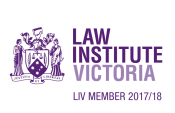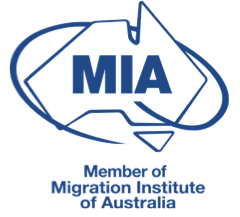–
All Australian visa applications are assessed on a case-by-case basis by the Department of Home Affairs (DHA). The processing times which are published on the DHA’s website give a rough indication of how long your Australian visa may take, although these times may vary depending on application volumes, available spots in the migration program, and particulars within your unique circumstances.
Visa processing times are also subject to change over time, which can recently be seen within the current climate, given the coronavirus pandemic. We have seen many variations in these processing times, with offshore applications generally slowing down dramatically, while onshore applications have sped up in many circumstances. With current border restrictions in place, priority has been given to these onshore visa applications, and in many cases critical employment sectors.
If you are worried your visa has taken longer than expected, check to see if the processing times have changed.
Visa processing times covered here are:
- Sublass 820/801 Onshore Partner Visa
- Subclass 309/100 Offshore Partner Visa
- Subclass 300 Prospective Marriage Visa
- Subclass 461 New Zealand Family Visa
- Subclass 482 Temporary Skill Shortage (TSS) Visa
- Subclass 186 Employer Nominated (ENS) Visa
- Subclass 187 Regional Sponsored Migration Scheme (RSMS) Visa
- Subclass 189 Skilled Independent Visa
- Subcass 190 General Skilled Migration Visa
- Subclass 491 Regional (Provisional) Visa
- Subclass 417 Working Holiday Visa
- Subclass 462 Work and Holiday Visa
- Subclass 500 Student Visa
Subclass 820/801 Visa Processing Time
The 820/801 partner visa is a two-stage onshore pathway to permanent residence, meaning that you will need to be in Australian to apply.
The Provisional (Subclass 820 Visa) and the permanent (Subclass 801 Visa) are applied for at the same time, however each have different processing times.
The Subclass 801 Permanent Partner Visa application and processing commences two years from the date the Subclass 820 application was lodged, unless the applicant and sponsor have a long-term relationship, or due to other specific circumstances designated within the Migration Regulations.
Subclass 820: Temporary Partner Visa
Visa Processing Time: 23 months – 27 months
Subclass 801: Permanent Partner Visa
Visa Processing Time: 11 months – 19 months
Subclass 309/100 Visa Processing Times
This is the offshore partner visa, meaning that it must be applied for outside of Australia, and consists of two different stages. The temporary Partner (Provisional) Visa (Subclass 309) and the permanent Partner (Migrant) Visa (Subclass 100).
The Subclass 100 Permanent Partner Visa application and processing commences two years after the Subclass 309 visa application is lodged, unless the applicant and sponsor have a long-term relationship, or due to other specific circumstances designated within the Migration Regulations.
Subclass 309: Partner (Provisional) Visa
Visa Processing Time: 18 months – 21 months
Subclass 100: Permanent (Migrant) Visa
Visa Processing Time: 17 months – 22 months
** In our experience (and we lodge 300-400 partner visa applications per year), Subclass 309/100 visa processing times vary widely, depending upon where the application is processed. New Delhi, for example, regularly takes more than 2.5 years to process these applications, whereas London often takes less than 6 months.
Subclass 300 Prospective Marriage Visa Processing Time
Otherwise known as the fiancé visa, the Prospective Marriage Visa (Subclass 300) is for those who are intending to marry their spouse within 9-months of the visa grant. This is applied for offshore, and then enables the applicant to come to Australia for a short period of time to marry their partner, and subsequently lodge a partner visa.
Once the visa is granted, there is no requirement to wed in Australia – the visa holder is free to marry their fiancé anywhere in the world following the grant of the visa.
Visa Processing Time: 19 months – 21 months
Subclass 461 Visa New Zealand Citizen Family Relationship Visa Processing Time
This is a 5-year visa, which is for people who are not New Zealand citizens, however, have family members who are, such as their spouse.
Visa Processing Time: 32 months 34 months
Subclass 482 TSS Visa Processing Times
There are three different streams within the Subclass 482 TSS (Temporary Skill Shortage) Visa, Short-Term, Medium and Long-Term, and Labour Agreement. Each stream has different processing times and each stream has different outcomes in respect to the time you may spend in Australia, and whether you can progress to permanent residence.
The government has prescribed occupation lists for both the Short-Term Stream and the Medium-Term stream of the 482 Visa. These lists determine which stream you are able to apply for, depending on which list your occupation appears on. This then subsequently determines the length your visa will be valid for once granted. There is no timeframe on when new occupation lists will be released by the Department of Home Affairs (DHA).
Where an employer has need for occupations not listed on the occupation’s lists, they may enter into a contract with the DHA called a Labour Agreement. Labour Agreements are complex contracts often involving extension negotiations with the Minister and stakeholders such as Unions. Each Labour Agreement is confidential and may or may not contain provisions allowing sponsored employees to progress to permanent residence.
Short- Term Steam
Visa Processing Time: 5 months – 7 months
Medium-Term Stream
Visa Processing Time: 4 months – 7 months
Labour Agreement Stream
Visa Processing Time: 4 months – 7 months
** The DHA has recently introduced a new list, called the Priority Migration Skilled Occupation List. This list comprises of 18 different occupations, which are critical skills, needed for the economic recovery due to COVID-19. These specific occupations are being prioritised, meaning that anyone who lodges a 482 Visa application relating to one of the 18 occupations will experience significantly faster processing times.
Subclass 186 Employer Nominated (ENS) Visa Processing Time
The Subclass 186 Employer Nominated (ENS) Visa has three streams to permanent residency, Direct Entry, Temporary Residence Transition (TRT), and Labour Agreement.
The Direct Entry Stream enables the visa applicant to be directly nomination by their employer. The TRT Stream allows 457 or 482 visa holders to transition to this permanent visa after 2 or 3 years with the same employer (depending on when the temporary work visa was granted). Lastly, the Labour Agreement Stream is for those visa applicants whose employers have a current Labour Agreement with the government.
Direct Entry Stream
Visa Processing Time: 5 months – 6 months
Temporary Residence Transition Stream
Visa Processing Time: 5 months – 9 months
Labour Agreement Stream
Visa Processing Time: Unavailable due to low volume of applications
** The DHA has recently introduced a new list, called the Priority Migration Skilled Occupation List. This list comprises of 18 different occupations, which are critical skills, needed for the economic recovery due to COVID-19. These specific occupations are being prioritised, meaning that anyone who lodges a 186 Visa application relating to one of the 18 occupations will experience significantly faster processing times.
Regional Sponsored Migration Scheme (RSMS) Subclass 187 Visa Processing Time
The Regional Sponsored Migration Scheme Visa (Subclass 187) is another permanent visa which consists of two different streams, Direct Entry and Temporary Residence Transition, although this is specifically relevant to those visa holders employed in regional Australia.
Direct Entry Stream
Visa Processing Time: 12 months – 32 months
Temporary Residence Transition Stream
Visa Processing Time: 6 months – 9 months
Skillselect Subclass 189 Visa Processing Time
There are two different streams which run under the Subclass 189 Skilled Independent Visa. The Points Tested Stream is for invited workers and the New Zealand Stream for qualifying New Zealand citizens.
Points Tested Stream
Visa Processing Time: 5 months – 18 months
New Zealand Stream
Visa Processing Time: 23 months – 26 months
** The DHA has recently introduced a new list, called the Priority Migration Skilled Occupation List. This list comprises of 18 different occupations, which are critical skills, needed for the economic recovery due to COVID-19. These specific occupations are being prioritised, meaning that anyone who lodges a 189 Visa application relating to one of the 18 occupations will experience significantly faster processing times.
Skillselect Subclass 190 General Skilled Migration Visa Processing Time
This General Skilled Migration visa requires nomination by State or Territory Government, as well as having an occupation on the skilled occupation list.
Visa Processing Time: 10 months – 13 months
** The DHA has recently introduced a new list, called the Priority Migration Skilled Occupation List. This list comprises of 18 different occupations, which are critical skills, needed for the economic recovery due to COVID-19. These specific occupations are being prioritised, meaning that anyone who lodges a 190 Visa application relating to one of the 18 occupations will experience significantly faster processing times.
Skillselect Subclass 491 Regional (Provisional) Visa Processing Time
This Skilled visa requires nomination by State or Territory Government, as well as having an occupation on the skilled occupation list, in addition to working in a regional area. There is no standardised processing time across Australia, and you will need to check the current processing times within the State or Territory you are applying in.
** The DHA has recently introduced a new list, called the Priority Migration Skilled Occupation List. This list comprises of 18 different occupations, which are critical skills, needed for the economic recovery due to COVID-19. These specific occupations are being prioritised, meaning that anyone who lodges a 491 Visa application relating to one of the 18 occupations will experience significantly faster processing times.
Subclass 417 Working Holiday Visa Processing Time
The Working Holiday Visa (Subclass 417) is aimed at young adults (18-30 years, and 35 for Irish and Canadian citizens) who want to travel to Australia for a prolonged holiday, while also working at the same time to fund their stay. After the first year, subsequent visas are granted once certain regional work requirements are met.
First Working Holiday Visa
Visa Processing Time: 42 days – 3 months
Second Working Holiday Visa
Visa Processing Time: 42 days – 3 months
Third Working Holiday Visa
Visa Processing Time: Processing times for this visa are not available
Subclass 462 Work and Holiday Visa Processing Time
The Work and Holiday Visa (Subclass 462) is aimed at young adults 18-30 years, who want to travel to Australia for a prolonged holiday, while also working at the same time to fund their stay. After the first year, subsequent visas are granted once certain regional work requirements are met
First Work and Holiday Visa
Visa Processing Time: 49 days – 79 days
Second Work and Holiday Visa
Visa Processing Time: 49 days – 79 days
Third Work and Holiday Visa
Visa Processing Time: Processing time for this visa is not available
Subclass 500 Student Visa Processing Time
The Student Visa (Subclass 500) allows applicants to participate in an eligible course of study, while remaining in Australia for the duration of their course, up to 5 years. There are many different education sectors that this visa may fit into, all with different processing times, and dependent upon the type of course enrolled in. The most common sectors have been listed below.
Vocational Education and Training Sector
Visa Processing Time: 3 months – 6 months
Higher Education Sector
Visa Processing Time: 80 days – 4 months
Postgraduate Research Sector
Visa Processing Time: 4 months – 8 months
Independent ELICOS Sector
Visa Processing Time: 83 days – 8 months
** While offshore student visas are still being processed, these processing times vary while border restrictions remain in effect, and even if granted will not be allowed to travel to Australia until restrictions are lifted.

 Points Test
Points Test
 Book Now
Book Now 


